Thursday, June 15th, 2017
I open the black leather bound book with the low relief letters forming the words “Ship’s Log” in preparation for our adventure and begin to record the usual information for all of our trip entries. “Thursday, June 15, 2017, HT 12:34 LT 18:41, Wind 12 mph SSW…” Hmmm, we will be participating in a conversation between the wind and the tide this evening as the water heads out the wind will be heading in… short chop. “Temp. 73 – 89 prcpt 15% departure: 18:30 return 20:30(ish) sunset 20:31…” I continue to check all of the vessel systems—hydraulics, bilge pump, life jackets, fire extinguishers, fuel levels (of course)—and then turn the perko switch from “OFF” to “ALL” and turn the key. Quick and sure, the Yamaha 150 springs to life with all of the zeal of a young black lab. Gotta love that fuel-injected four stroke—best outboard engine ever made. We are ready for an adventure on the USCG-Inspected 2790 Carolina Skiff… Motor vessel “Skimmer”… 27 feet long and 8.5 feet on the beam… perfect for this.
MV Skimmer is accustomed to trips like this one. They are her Jam. She is named after one of our favorite birds, the Black Skimmer. Tonight we are hosting seven passengers on board in search of all the birds we can find. We are also in search of a connection with an unusual and apparently curious man who traveled these same waters nearly 300 years ago in search of the exact same thing. This English naturalist and artist was known to the Royal Society of London by the name of Mark Catesby.
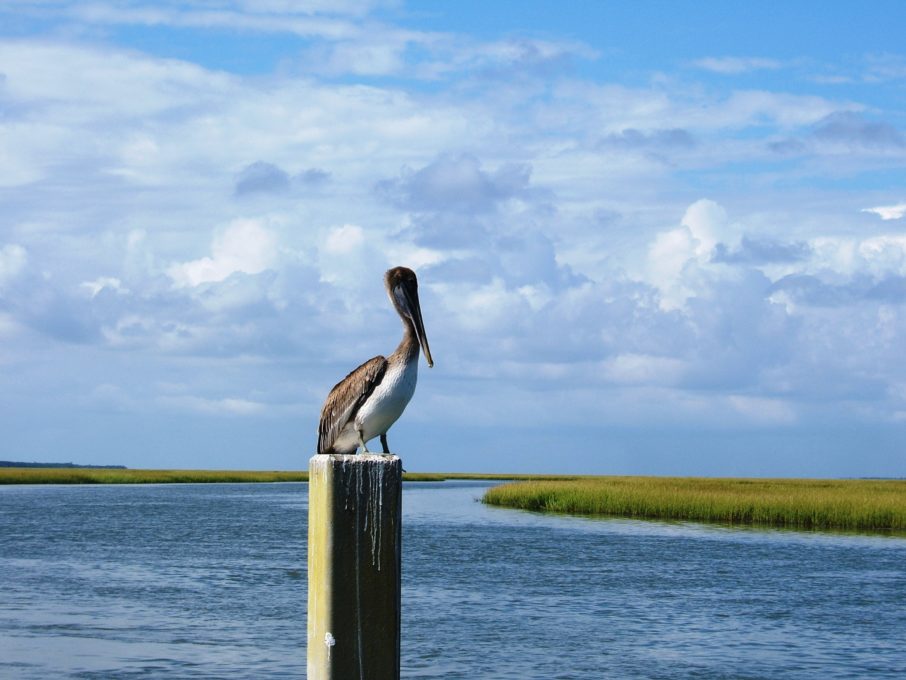
Our guests on board for this sunset cruise adventure are an eclectic mix of people and ages. The youngest passenger is six years old. The oldest is 91. I am impressed that these two share an enthusiasm and wit that is remarkably similar—grandfather and granddaughter—perfect.
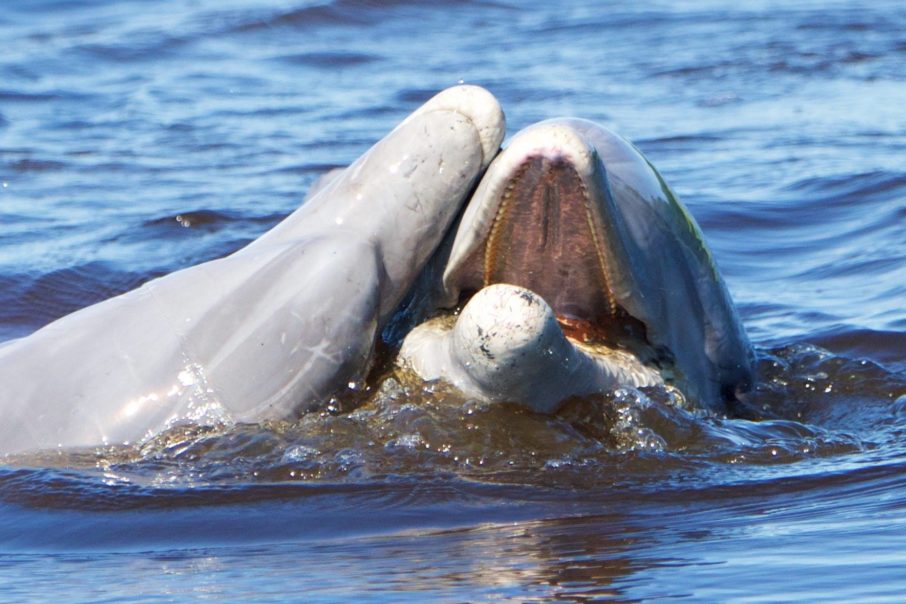
We are not underway for 10 minutes before we spot our first dolphins just off of the bow. Things start to happen quickly at this point. Eastern Brown Pelicans are abundant, both the grey-headed adolescent and the white-topped adult. There is an American oystercatcher feeding on the edge of this low tide—black head, brown back, white underneath with that trademark flat, bright-orange beak—unmistakable. I wonder for a moment where its mate has wandered off to and then remember the eggs. No doubt one must stay back this time of year to guard the precocial future of their tribe.
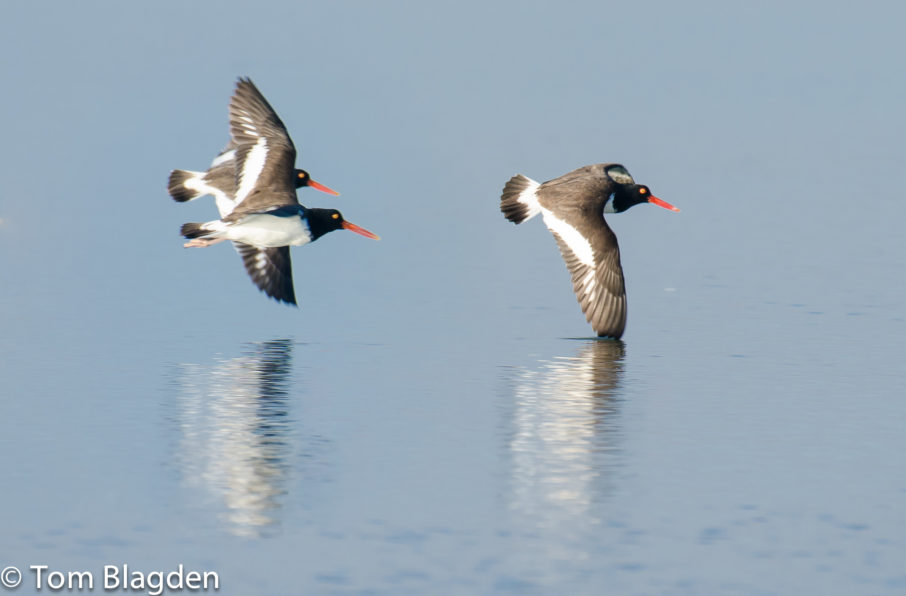
We continue to edge out to the mouth of the creek and venture into Charleston Harbor proper on our way to what is left of the State Heritage Preserve and bird nesting area of Crab Bank Island. I know we will find newborn pelicans there as well as that oystercatcher’s patient mate. The skyline of the Holy City rises from the water on our starboard side and the church steeples of its namesake stand the tallest on the horizon. And so the adventure begins.
It is a good evening for birding. We see all of the usual suspects: laughing gulls, cormorants, grackles, and the like. We also see the terns… gull-billed, least, sandwich, and royal all feeding on the vigorous schools of menhaden and other finned fish churning in the warm June low tide. Black Skimmers cleave their way through the water beside the boat proud of their famous under bite, and white ibis head somewhere South for the roost. Still and vigilant, the Great Blue Heron, Great Egret, Snowy Egret, and Tricolor all maintain focus on some unsuspecting prey as we slide past.
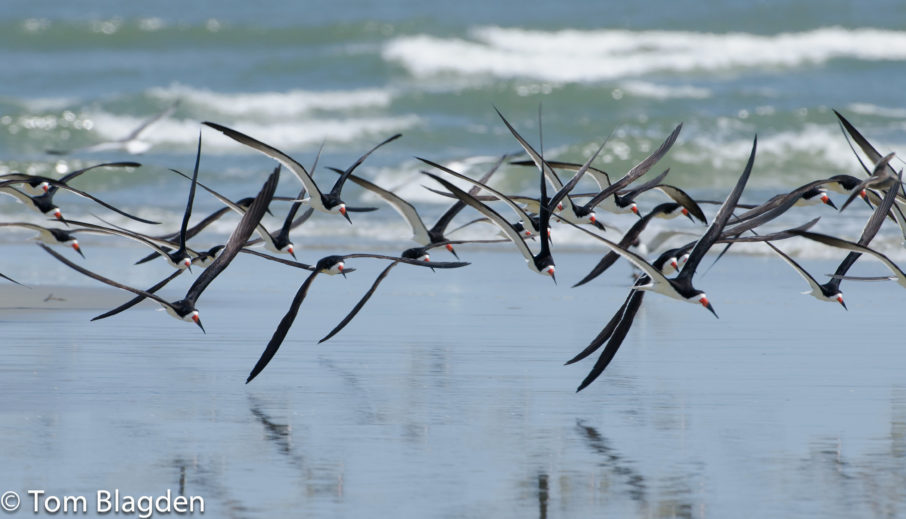
The most fascinating creatures of the night, however, are the explorers on board the boat. We discuss human history, natural history, philosophy, and humor. Everyone on board has visited the Catesby exhibition at the Gibbes the day before and this trip for them is a culmination of that experience. We pontificate on specifics of Mr. Catesby’s life and wondered what it must have been like to have the sky darkened by Passenger Pigeons or to see an Ivory Billed Woodpecker or Carolina Parakeet. The youngsters of the group are patient with us and enjoy the splash of the tide versus the wind, fluffy white baby pelicans, and even a little sand bar exploration for shells and one inadvertently abducted striped hermit crab.
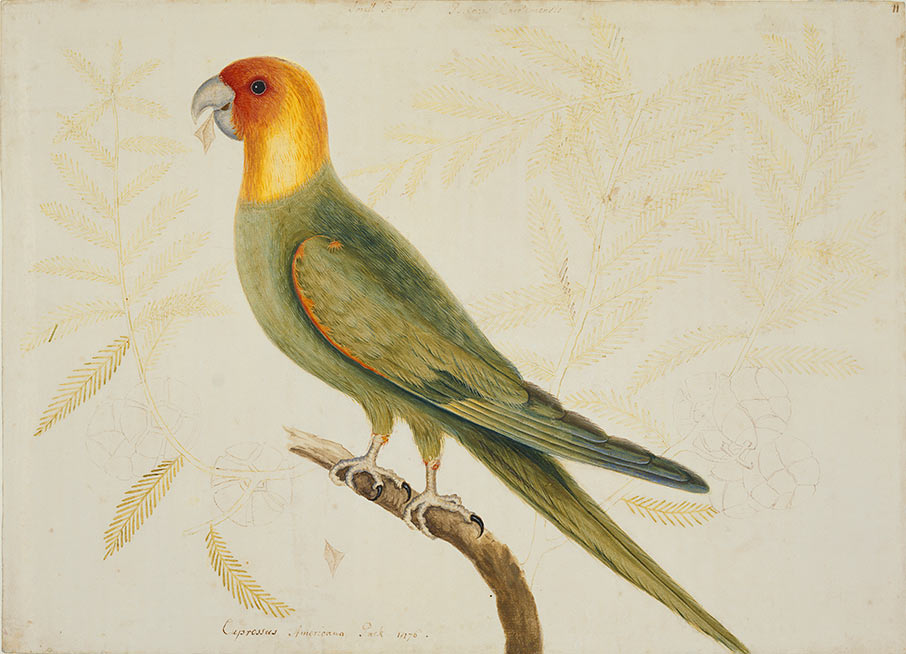
We also discuss our community. We share our blessings and our challenges and we talk about the relationship business. We unanimously agree that the Gibbes–Coastal Expeditions partnership is a good thing and that we would like to see more of it.
On the way back to the home pile with the sun now fully set, I consider the contribution of an 18th-century naturalist and his comprehensive flora and fauna descriptions and renderings, and the odds that those seeds are taking root still today in the minds of the curious people that seek these experiences. Looking down to the port bench slightly forward of the console, I see the sweetest six-year-old cuddled and sleeping in her grandfather’s lap, his eyes keen and vigilant protecting the precocial future of our tribe. Perfect.
—Capt. Chris Crolley, naturalist, Coastal Expeditions and guest blogger
For more information on the Catesby tours, Exhibition to Expedition, visit coastalexpeditions.com/catesby-tours. Coastal Expeditions is offering 25% off Catesby tours for Gibbes members.
Top image: Coastal Expeditions Boat with Castle Pinckney in background. Photograph by Richard Stuhr.

